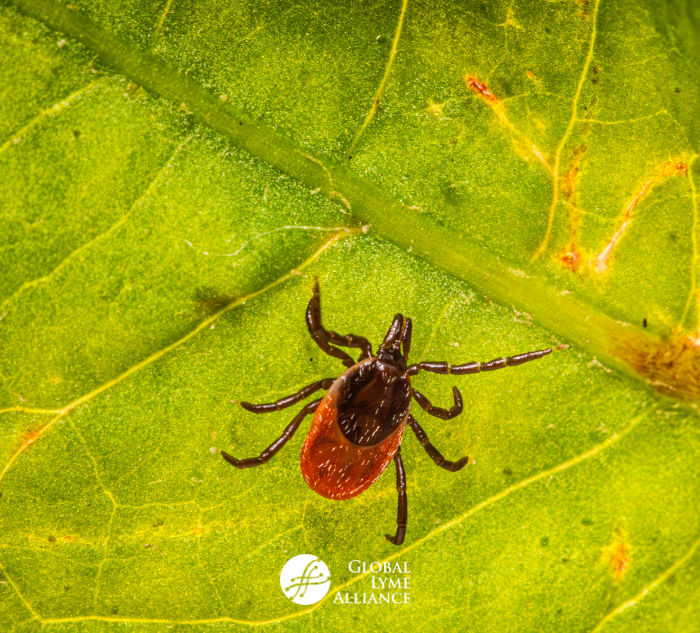
Learn how to safely incorporate exercise with Lyme disease, including tips on pacing, starting small, and the right questions to ask a Lyme expert or physical therapist.
When I was wrestling undiagnosed tick-borne illness in college, I frequently visited the college health center for flu-like symptoms including fatigue, body aches, headaches, and fever. After blood work came back normal, I was told messages that Lyme patients hear too often: “You must just be stressed,” “Maybe you’re just run down,” “Maybe you should see someone in counseling about all of this,” and “You just need to exercise more.”
That last one got under my skin like the microbes that I didn’t know were there, because I was an athlete. Not a professional athlete or an athlete for a team sport, but nevertheless someone who ran several miles three times a week; who skied every day possible in the winter; who waterskied, paddled, and swam in the summer; who worked overtime at the gym doing hamstring curls and leg lifts when rehabbing a torn ACL; and who a Lyme literate Medical Doctor (LLMD) later dubbed “an endorphin junkie.”
When I was sick, I wanted nothing more than to exercise more, because doing so was my norm. But I couldn’t. Not because I wasn’t motivated. Not because I was lazy. Not because I was depressed. I couldn’t exercise the way I wanted to—or at all—because I was too sick to do so. Fatigue shackled me to bed. Joint aches made it hurt to walk or type. Fever exhausted me.
For years, these symptoms waxed and waned. During healthy periods, I would do all my usual activities but then get sick again and crash for days or weeks. After six years of pushing through following an unknown tick bite, I got mononucleosis. Because of the underlying untreated tick-borne infections, my body couldn’t fight the mono, which slipped into chronic active Epstein-Barr virus.
I was bedridden. Not just for a few days or weeks, but for two years. My favorite activities, and my professional life, came to a standstill. The efforts of walking to the mailbox or driving to the pharmacy sent me straight back to bed. Walking up a flight of stairs felt like climbing a mountain.
“Exercising more” was an absurd recommendation, akin to telling a cancer patient to run a marathon.
Once I was accurately diagnosed with Lyme disease, babesiosis, ehrlichiosis, and possible bartonella, I began intense treatment including intravenous antibiotics. At first, my symptoms got worse before better as I wrestled Jarisch-Herxheimer reactions. But as I started to regain some energy, I itched to return to the activities I loved.
My body, however, was deconditioned, and still tired easily as it continued to fight infections and work to restore health. The question, then, became, how do I add exercise back into my life, without overdoing it and crashing? As I got stronger and more capable, the question shifted to, how do I maintain physical activity without triggering exhaustion or setbacks?
Here are some tips I learned along the way:
Ask whether you’re ready
Depending on where you are in your tick-borne disease journey, you may not be ready for exercise, or you may only be capable of very small spurts of physical activity. Ask yourself, would exercising make me feel worse or better? No one knows your body better than you do. It may be that your body just needs to rest for a while before attempting exercise. Talk with your LLMD about whether exercise would be healthy for you at this particular stage, and if so, how to begin. As a physical therapist once said to me, “You can’t just go right back to the top of a mountain.”
Start small
Not only could I not go right back to the top of a mountain, I also couldn’t just get right back on my skis. Exercise for me began with the tiniest movements. My physical therapist had me begin with my fingers and toes. My fingers manipulated the holes of a small piece of plastic material, stretching them as I slowly stretched my smallest joints. With my big toe, I traced a yin-yang sign. Eventually we moved on to slow stretches and to working with light elastic pulleys. It took some time to work up to real cardiovascular exercise, which I began by slowly pedaling a zero-resistance stationary bike.
My journey back to skiing was not linear. Each day with tick-borne illness is different. I would work up to a minute on the stationary bike, then have an off day, then get back on the bike and do a minute and thirty seconds, then have a flare up and have to go back to one minute. This pattern continued until eventually I had more good days than bad, and more gains than losses. (To read more about this journey from a minute on a bike to getting back on skis, see my poem “Never Say Never”.)
Work with a physical therapist
Your muscles will be naturally deconditioned from illness, so the even the strongest athletes can use assistance with reconditioning. Of course, you want your physical therapist to be Lyme literate, so that they don’t encourage you to push yourself beyond your limits. Call different physical therapists covered by your insurance and ask if any have worked with Lyme patients before, or at least with chronic illness patients. Talk to people in your Lyme support network to see if they have referrals.
In addition to doing very small exercises with me and encouraging me to listen to my body, my physical therapist also practiced integrative manual therapy. As part of our sessions, I would like on a massage table while she gently manipulated my muscles and tissues, doing neurofascial release and cranial sacral therapy. When searching for a physical therapist, ask if any practice integrative manual therapy.
Consider co-infections
If you have other tick-borne illnesses in addition to Lyme disease, they may impact your ability to exercise. Babesiosis usurps the oxygen in the red blood cells, which can cause air hunger and the feeling of “hitting a wall” that marathon runners experience. This parasitic infection affected my ability to exercise more than Lyme disease did. The air hunger and migraine headaches I experienced when I first started exercising signaled to my LLMD that my babesiosis was flaring, and we needed to treat that before I could continue with an exercise routine.
Pace yourself
In my blog post “Tips to Improve Energy Levels with Lyme Disease,” I encourage patients to pace themselves, and I offer that same advice when it comes to exercise. Your natural desire will be to push yourself, because you’ll be eager to do what you once could. You’ll be having fun, so you’ll want to walk that extra block or ski that extra run. The key with tick-borne illness is to stop before you’re tired. This point will likely be different on different days, so listening to your body each time you exercise is critical. Even now, sometimes I can ski eight runs without thinking about it, and sometimes I tire after four. On those days, I think, “But I did eight last week.” I have to remember that if I want more consistent days of eight or more runs, I need to rest when my body asks for it.
To avoid post-exertional malaise, long-haul COVID patients are encouraged not to push themselves beyond a “4” on a 1-10 scale of exertion and fatigue. Only you know what your personal “4” is, which may vary. A good test is to see if you’re able to talk while exercising. If you can’t, you’re likely pushing beyond a “4,” and need to dial it back.
Rest and recover
No matter how good you’re feeling, your body needs time to rest and recover after exercise. If you have a great workout one day, you might be inclined to try it again the next day, but give your body some time to replenish. Remember to nourish your body, too, eating good foods and hydrating to keep your body as healthy as possible for exercise.
If you’re feeling overwhelmed by the prospect of exercise with Lyme disease, know that eventually it is possible, even for the sickest of patients. Following these tips can hopefully help you start a routine, and maybe even have fun while doing it!
***

Jennifer Crystal
Writer
Opinions expressed by contributors are their own. Jennifer Crystal is a writer and educator in Boston. Her work has appeared in local and national publications including Harvard Health Publishing and The Boston Globe. As a GLA columnist for over six years, her work on GLA.org has received mention in publications such as The New Yorker, weatherchannel.com, CQ Researcher, and ProHealth.com. Jennifer is a patient advocate who has dealt with chronic illness, including Lyme and other tick-borne infections. Her memoir, One Tick Stopped the Clock, was published by Legacy Book Press in 2024. Ten percent of proceeds from the book will go to Global Lyme Alliance. Contact her via email below.







-2.jpg)